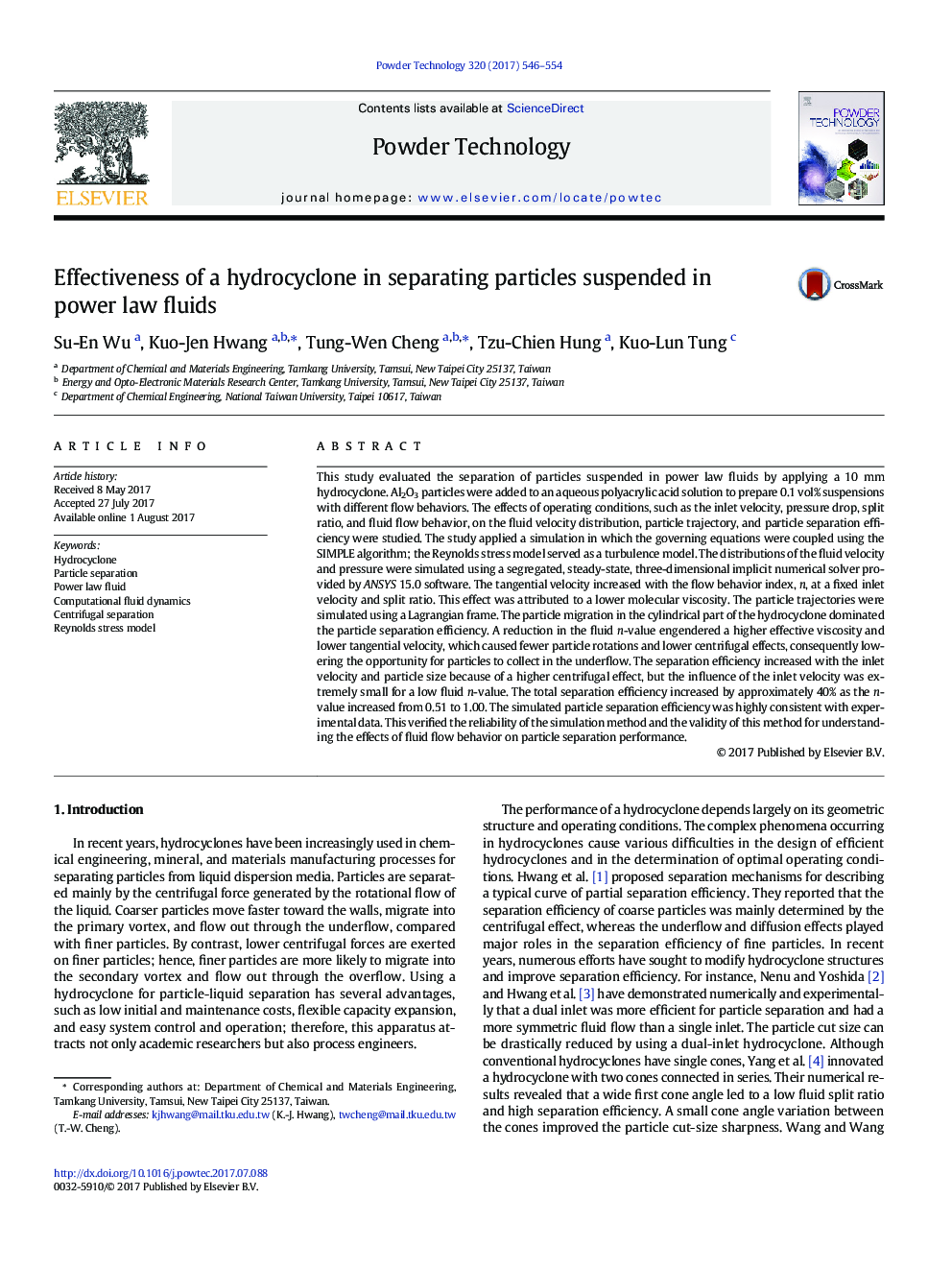| کد مقاله | کد نشریه | سال انتشار | مقاله انگلیسی | نسخه تمام متن |
|---|---|---|---|---|
| 4910427 | 1427721 | 2017 | 9 صفحه PDF | دانلود رایگان |
- Hydrocyclone was used for separating particles suspended in power law fluids.
- Flow behavior of fluids played significant role on particle separation efficiency.
- A lower n-value fluid caused fewer particle rotations and lower centrifugal effect.
- Total separation efficiency increased by 40% as n-value increased from 0.51 to 1.0.
- Simulated particle separation efficiency was consistent with experimental data.
This study evaluated the separation of particles suspended in power law fluids by applying a 10Â mm hydrocyclone. Al2O3 particles were added to an aqueous polyacrylic acid solution to prepare 0.1Â vol% suspensions with different flow behaviors. The effects of operating conditions, such as the inlet velocity, pressure drop, split ratio, and fluid flow behavior, on the fluid velocity distribution, particle trajectory, and particle separation efficiency were studied. The study applied a simulation in which the governing equations were coupled using the SIMPLE algorithm; the Reynolds stress model served as a turbulence model. The distributions of the fluid velocity and pressure were simulated using a segregated, steady-state, three-dimensional implicit numerical solver provided by ANSYS 15.0 software. The tangential velocity increased with the flow behavior index, n, at a fixed inlet velocity and split ratio. This effect was attributed to a lower molecular viscosity. The particle trajectories were simulated using a Lagrangian frame. The particle migration in the cylindrical part of the hydrocyclone dominated the particle separation efficiency. A reduction in the fluid n-value engendered a higher effective viscosity and lower tangential velocity, which caused fewer particle rotations and lower centrifugal effects, consequently lowering the opportunity for particles to collect in the underflow. The separation efficiency increased with the inlet velocity and particle size because of a higher centrifugal effect, but the influence of the inlet velocity was extremely small for a low fluid n-value. The total separation efficiency increased by approximately 40% as the n-value increased from 0.51 to 1.00. The simulated particle separation efficiency was highly consistent with experimental data. This verified the reliability of the simulation method and the validity of this method for understanding the effects of fluid flow behavior on particle separation performance.
This study separated particles suspended in power law fluids with various flow behaviors by using a 10Â mm hydrocyclone. The effects of operating conditions and fluid flow behaviors on the fluid velocity distributions, particle trajectories, and particle separation efficiencies were simulated and compared with available experimental data.111
Journal: Powder Technology - Volume 320, October 2017, Pages 546-554
